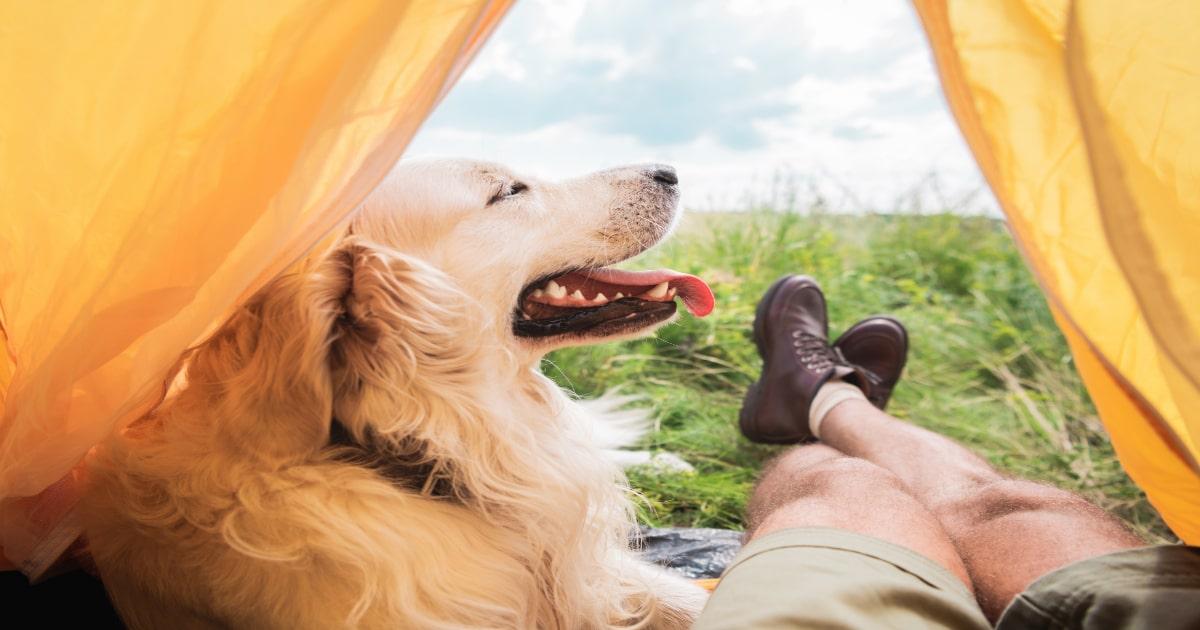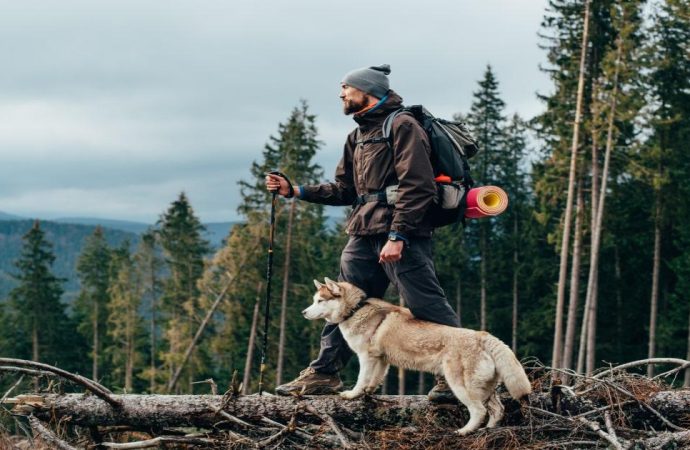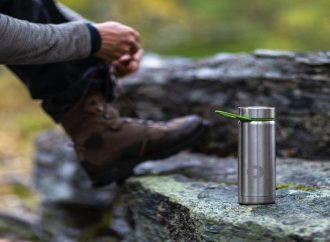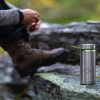Bugging out is the idea of taking all your belongings with you to keep moving in a SHTF situation, rather than staying in the one place. Of course, there are both pros and cons to this, but one pro is that you can bug out with your pet and they can be included in the
Bugging out is the idea of taking all your belongings with you to keep moving in a SHTF situation, rather than staying in the one place. Of course, there are both pros and cons to this, but one pro is that you can bug out with your pet and they can be included in the action.
This article will explore how to safely bug out and how preparation will help with this, before going on to explore how different pets are suited to the bugging lifestyle.
Bugging Out Safely With Your Pet
There are several steps you can take to increase your chances of bugging out safely with your pet.
It is important to know how you will get to your target location. This refers to the transportation (either car, bike, on foot) and the route itself. As with a lot of the English countryside, there are many ways to reach the same destination so you should always be prepared with a detailed map of the local area.
It is worth considering multiple routes in case you have to change direction for safety reasons when you bug out with your pet.
Pets like dogs will walk with you, but if you have a cat then unless it can walk on a lead you will need to find a suitable pet carrier.
Think about whether your safe location destination a secret, or is it possible that other people may be heading there?
As well as this, depending on the survival setting context that unfolds and leads to this, you may wish to stick to routes off the beaten track to avoid bumping into less friendly individuals.
If you want to stay somewhere low key, then a barking dog might not be the best option. You can’t really bug out with your pet if they are a loud animal if you’re trying to stay under the radar.
Think about what you plan to do when you finally reach the destination. Are you setting this place up for a long period of stay? If so, a lot of preparation is needed here. Or is it a short stay and then moving on again. If this is the case, where to next?
An animal like a cat can’t just stay in a cage or carrier all the time, and if let loose in a strange environment will likely wander away and not be able to find its way back.
How To Prepare To Bug Out With Your Pet
Now that you know where you want to go, you can focus on how best to prepare for it. There are several ways to do this:
 1. Ensure you are in good shape. Bugging out requires a lot of physical strength and stamina due to walking long distances and carrying supplies.
1. Ensure you are in good shape. Bugging out requires a lot of physical strength and stamina due to walking long distances and carrying supplies.
A dog can be kept on a lead or roam free and you can even make it a proper survivalist bug out partner with its very own doggy saddle bag!
2. Pack plenty healthy foods, including snacks. This will help keep your energy levels up. Also find out about what you can eat in the British countryside to help foraging. If you are bringing someone less physically fit along, consider finding a bike or horse to help.
Dogs will require some dry food or tinned meat, but can also just survive off suitable human food if you don’t have the resources.
3. Make sure your feet are protected with suitable footwear. It may not be possible to walk along roads and paths, and those comfortable boots will be a godsend when climbing hills and uneven ground.
A horse will be a good animal to take with you if you bug out with your pet or work animal over a long distance, and you can even carry a bird of prey across rough terrain.
4. Think about what kind of bug out bag you will need. Don’t pack too much as this will only weight you down and take care when packing so that nothing gets broken or damaged.
Pet food can weigh a lot, so only carry what you can handle and opt for lighter biscuit style food rather than tins.
5. Water is vital to your survival. Although there will be safe places to source water when walking through the English countryside, it is important to carry a supply with you.
Pets need just as much water as you do, and especially on a hot day they can become dehydrated no matter how big or small they are. Buy a collapsible water bowl for your pet to give them a drink and always ensure that you have some sort of lead if they need to be tied up.
6. Wear clothing that will offer total protection against the elements. A waterproof coat is a must for the British weather, but you can also get waterproof trousers that go over the top of your dry clothes. Also, something that can dry quickly is useful since it is likely you will have to travel through water at some point.
Pets like dogs will love getting wet and won’t mind it, but if you do have a pooch who is adverse to getting wet, which over a prolonged period canlower their body temperature, you should consider getting them a special dog coat. Birds, cats and small rodents on the other hand will not enjoy such weather conditions.
 7. Make sure you take time to rest. In a survival setting, preppers will be challenged both physically and mentally so keeping yourself sharp and on form will be helped by resting often and having the right health kit in your bug out bag.
7. Make sure you take time to rest. In a survival setting, preppers will be challenged both physically and mentally so keeping yourself sharp and on form will be helped by resting often and having the right health kit in your bug out bag.
A supply of medication will also help this, and a compact first aid kit too for minor injuries. Also, bring any medication your pet might need, even if it’s just some worming tablets or a bottle of anti-inflammatory medicine in case they get ill. You can even buy a dedicated doggy first aid kit if you plan on bugging out for a long time with them.
8. If you are travelling with other people, take time to distribute resources between all able-bodied people. This saves one person from having to carry too much.
If you want to bug out with your pet which is not capable of walking cat in a carrier, this is a substantial weight and after a few miles you will be starting to wonder whether bringing kitty was the best idea.
Taking Your Pet

If you already own a pet, you may be considering if it worth bringing them with you. Before doing so, it is important to consider the implications of this. These include:
Food – any pets will require a good supply of food to keep them fit and healthy. Ensure that whatever food your pet eats is easy to find when on the move and remember to bring them a travel bowl to eat out of too.
Water – they will also require drinking water, and this should be transported too aswell as a collapsible drinking bowl.
Bugging out bags – some pets like larger dogs can safely carry their own bugging out bags, and you can even get camouflage bug out bags for dogs. This means you will be able to take slightly more with you in terms of resources, but you can’t load them up like a mule!
Health – as with humans, animals get sick. Make sure you are equipped to treat any sick animal with medication, resources to treat injury, and at least a basis understanding of their anatomy as finding a vet practice will not be an option.
Leash and collar – although a retractable leash is handy to have, a regular long dog lead is more robust so a good option in this setting.
Noise discipline – pets can be noisy and react to things that they hear so make sure your pet is trained to not make too much noise when you are trying to keep quiet.
Entertainment – some animals will require more entertainment that others. Ensure you have plenty of robust dog toys if required to help keep their minds sharp and relaxed, and off the fact that they’re not in the comfort of their home and are on the road.
Pets Not To Bug Out With
Unfortunately, not all pets are good bugging out companions. Here are some examples of pets that would be better left behind:
Birds – budgies, parrots and just anything winged requiring a cage will not be a good pet to bug out with. If you plan on leaving for a very long time and won’t be able to feed or water them, just release them into the wild.
Fish – it will be impossible to carry an aquarium so ensure you release them into a pond or stream, or flush them so they don’t starve to death in a tank in your absence.
Small rodents – hamsters, mice and rats would need to be transported in a cage and too small to serve as a supply of meat.
Cats – not a good bug out animal as they won’t be able to settle well in a new location and will likely be stressed, stray from your camp and get lost.
Exotics – snakes, lizards and tortoises are not the ideal pet to bug out with as they require heat lamps and won’t survive in winter, plus they don’t really serve a survival purpose.
Best Pets To Bug Out With
Luckily, some pets make excellent bugging out companions. Here are some examples:
Dogs – the most common pet and ideal bugging out companion. They can carry resources, help defend you and use their sense of smell to track. This includes both small dogs and big dogs as they each have different benefits.
For example, small dogs are great for going down burrows to source food, and bigger dogs are great for keeping threats away. The same applies to different breed types, as some are better at using their scent, such as spaniels.
Rabbits/guinea pigs – not quite a companion role, but can be taken with you as a source of meat – if they’re not the family pet, of course!
Chickens – these are also a good source of meat, and if taking to a new location will be easy to settle there and produce eggs and meat in the future.
Horse – a strong animal that can help carry resources and alleviate travelling on foot, plus they can go cross country.
Bird of prey – if well trained, this can help you hunt when travelling if you own a bird of prey that is tame like an owl or a kestrel.
Summary
Although not all pets make good survival companions, some are great for bugging out. As a prepper you would benefit from training any pets at this stage, so that when the occasion does arise, you are prepared to bug out with your pet and are both ready for survival.





















